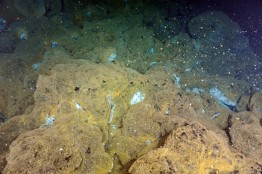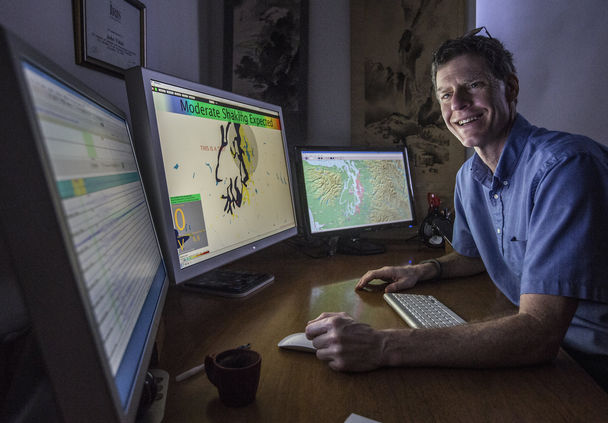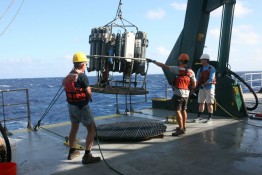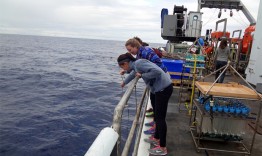Recent press coverage and conversations on social media have been a good reminder for Pacific Northwesterners that they live in a seismically active region. Stretching from northern California to British Columbia, the Cascadia subduction zone could slip at any time, causing a powerful earthquake and triggering a tsunami that would impact coastal communities. Scientists from multiple disciplines at the University of Washington and other institutions are working to learn more about this natural hazard.
See the full Q&A at UW Today »UW oceanographers explore recently erupted deep-sea volcano
This spring, seafloor seismometers connected to shore by a new Internet cable showed that the 3,600-foot-tall underwater Axial Volcano started shaking April 24, 2015 and shook continuously for several days. University of Washington oceanographers visited the deep-ocean volcano in late July and parts of the seafloor were still warm, giving the team a glimpse into the changes that happened around the the mile-deep volcano 300 miles off the Oregon coast.
Read more at UW Today »Earthquake early warning system funding awarded to UW, West Coast universities
A recent article published by The New Yorker has resulted in widespread talks and panic about the risk of a mega-earthquake off the Pacific Northwest coast. While the seismic hazard is real, the article’s tone may have been overly fatalistic and didn’t highlight earthquake preparedness tools that are now being developed. The U.S. Geological Survey announced today that $5 million will go to the University of Washington and three other institutions to help transition the ShakeAlert earthquake early warning system to a public-facing tool.
Read more at UW Today »JISAO scientists play critical role in ocean health XPRIZE
Sunburst Sensors, based out of Missoula, MT, grabbed the two top spots in the Wendy Schmidt Ocean Health XPRIZE, receiving a $1.5 million award for advancing scientist’s ability to measure ocean chemistry as it relates to ocean acidification. Designed as a competition to spur innovation, teams from around the globe competed to develop the most promising technologies in two categories: a device that is easy to use and cost effective and a device that is highly accurate when tracking ocean acidification.
Read more »College of the Environment students, researchers at sea to learn more about deep-sea volcano eruption
When the Axial Seamount, an underwater volcano, erupted off the coast of Oregon in April, researchers knew within minutes that something spectacular was happening more than 300 miles offshore. Precision hardware installed by the University of Washington last summer let scientists see its effects almost instantly from shore. A team of researchers, engineers and students is now at sea working to maintain that equipment and assess the volcano’s aftermath.
Read more at UW Today »





